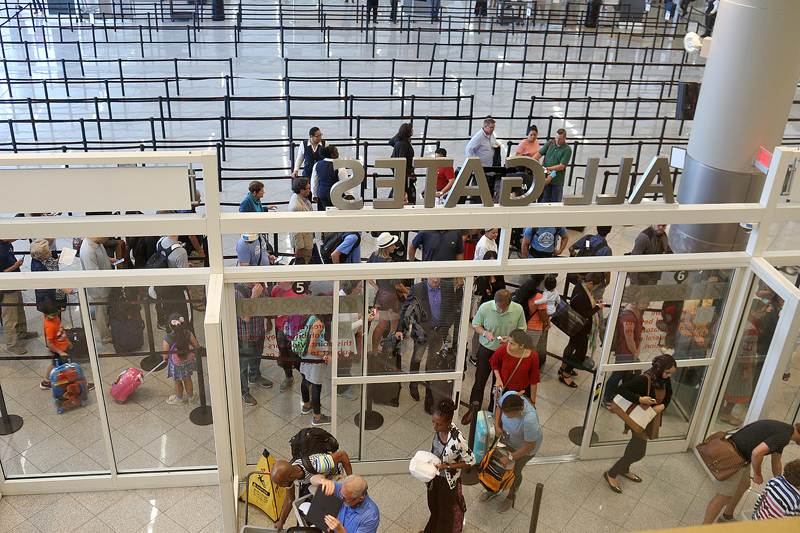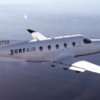Five changes to the process and procedures pertaining to security across the United States were announced from the Transportation Security Administration through this official press release earlier today, Thursday, May 21, 2020 as a result of the current 2019 Novel Coronavirus pandemic — and those changes are expected to be completely implemented at the security checkpoints of all airports throughout the country by the middle of June of 2020.
Updated Security Procedures Announced From Transportation Security Administration May 2020
The main purpose of the aforementioned changes is to limit physical contact while simultaneously increasing physical distance between people as much as possible in order to reduce the potential for cross-contamination at the security checkpoints of airports as part of an overall effort to help mitigate the spread of the 2019 Novel Coronavirus — and the implementation of these changes is already underway, as the Transportation Security Administration has reported experiencing a steady growth of travelers coming through airport checkpoints within the month of May of 2020.
As a result of the five changes to the process and procedures being implemented at security checkpoints at airports throughout the United States, you should expect to:
- Keep possession of your boarding pass at all times. Simply place your boarding pass — whether it is paper or electronic — on the boarding pass reader yourself instead of handing your boarding pass to an agent of the Transportation Security Administration at the travel document podium. After your boarding pass has been scanned, you should hold their boarding pass toward the agent of the Transportation Security Administration to allow him or her to visually inspect it. This change reduces the need for an agent of the Transportation Security Administration to touch the boarding pass of any passenger — thus reducing the potential for cross-contamination of viruses, microbes, and germs.
- Separate food for X-ray screening. Place your carry-on food items into a clear plastic bag and place that bag into a bin. Food items often trigger an alarm during the screening process; and separating the food from the carry-on bag lessens the likelihood that an agent of the Transportation Security Administration will need to open the carry-on bag and remove the food items for a closer inspection. This requirement allows for distancing between people; reduces the need for an agent of the Transportation Security Administration to touch containers of food which are carried by passengers; and reduces potential for cross-contamination. If you are a member of the TSA Pre✓ Program, you do not need to remove items from your bags.
- Pack smart. Take extra care to ensure that you do not have any prohibited items — such as liquids, gels or aerosols in quantities greater than 3.4 ounces — in your carry-on bags. An exception to this requirement is that you are permitted to carry one liquid hand sanitizer container of up to 12 ounces in your carry-on bag. You are required to remove the bottle of liquid hand sanitizer from your carry-on bag before being submitted for X-ray screening. If your bag is found to contain a prohibited item, your may be directed to return to the divestiture table outside of security with your carry-on bags to remove the item and dispose of the item. You may also be directed back outside of security to remove items that should have originally been divested — such as laptop computers, liquids, gels, and aerosols, and large electronics — and resubmit your property for X-ray screening. By resolving alarms in this manner, the frequency of the need for agents of the Transportation Security Administration to touch the contents inside a carry-on bag will be significantly reduced and thus mitigate the potential for cross-contamination.
- Practice distancing between you and other people. Distance yourself from other people to reduce direct contact between employees and travelers whenever possible without compromising security. Although the process may differ between airports — as no two airports are alike — noticeable adjustments leading up to the security checkpoint include:
- Increasing the distance between individuals upon entering the security checkpoint
- Placing visual reminders of appropriate spacing on checkpoint floors
- Staggering the use of lanes where feasible
- Wear either a mask or some other form of protection for your face. Agents of the Transportation Security Administration are now using facial protection at security checkpoints at airports; and you are encouraged to wear a mask or some other form of protection for your face as well through the security checkpoint at the airport. You may need to adjust your mask or some other form of protection for your face at some point during the screening process. You are also encouraged to remove items such as belts, and items from their pockets — such as wallets, keys and phones — and put them directly into your carry-on bags instead of into the bins to reduce touch-points during the screening process.
Procedures Which are Already In Place Because of the Current 2019 Novel Coronavirus Pandemic
If you have not flown as a passenger aboard an airplane since before the current 2019 Novel Coronavirus pandemic, you are also likely to notice some other changes which have already been implemented — such as:
- Reduced usage of security lanes due to the reduction in passenger volume.
- All agents of the Transportation Security Administration at security checkpoints at airports wearing masks and gloves.
- Agents of the Transportation Security Administration optionally wearing eye protection and clear plastic face shields at some locations.
- Agents of the Transportation Security Administration will continue the practice of changing gloves after each pat-down.
- Plastic shielding installed at many travel document checking podiums, divest, bag search and drop off locations.
- Agents of the Transportation Security Administration practicing distancing between themselves and other people.
- Routine cleaning and disinfecting of surfaces that are frequently touched in the area of the screening checkpoint.
Summary
Check with the airline with which you will be traveling as a passenger prior to embarking on your trip, as many airlines and airports are also providing specific guidance to travelers related to the current 2019 Novel Coronavirus pandemic.
In order to allow adequate time for the pre-flight experience — such as checking bags, completing security screening, and getting to the departure gate as three of many examples — you are also encouraged to arrive at the airport early well in advance of the departure time of the flight, as staffing and operations across the airport environment have been affected by the current 2019 Novel Coronavirus pandemic.
Photograph ©2018 by Brian Cohen.

